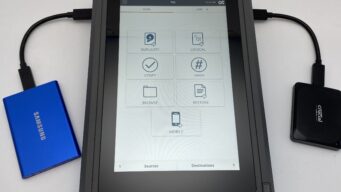In the ever-evolving world of cybercrime and digital threats, investigators need more than just tools—they need clarity, speed and trust in the data they collect. That’s where OpenText Digital Forensics and Incident Response (DFIR) stands out. Known for its deep roots in digital investigations, OpenText offers a powerful DFIR portfolio that helps organizations uncover the truth faster and respond with precision.
The rise of DFIR in modern investigations
Digital Forensics and Incident Response (DFIR) has become an essential pillar in cybersecurity and criminal investigations. Incidents abound, from ransomware attacks against a corporation to data exfiltration by a disgruntled insider to a digital trail left by a criminal suspect. Organizations must have the ability to collect, analyze, and report on digital evidence in real time.
OpenText delivers Digital Forensics and Incident Response tools designed to do precisely that. And they have workflows built for speed, transparency, and investigative depth.
What makes OpenText DFIR different?
OpenText’s approach to DFIR stands out in several important ways:
Unified evidence collection across devices
OpenText Digital Forensics and Incident Response tools enable the seamless collection of data. They also work across multiple device types and environments, including laptops, mobile phones, cloud services, and even volatile memory. Whether an endpoint is on-premises or remote, OpenText DFIR tools enable the collection of data without disrupting the user or alerting potential adversaries. Products like OpenText Endpoint Investigator support targeted evidence acquisition with live and dead box collection, memory capture, and remote endpoint analysis, allowing SOC and DFIR teams to act quickly in volatile situations.
Deep analysis at speed
Modern investigations demand speed, but not at the expense of depth. OpenText Digital Forensic and Incident Response tools use advanced indexing and timeline analysis to help investigators quickly correlate data points related to file changes, registry activity, login events and communication across applications. OpenText automatically surfaces key artifacts, reconstructs user activity, and correlates data across sources. This means that investigators can answer the “what, when, how, and who” of an incident faster and with confidence.
Cloud and mobile forensics
Today’s digital footprints often live beyond the hard drive. OpenText Digital Forensics and Incident Response capabilities allow forensic teams to collect and analyze data from cloud platforms. This includes Office 365 and across more than 36,000 different mobile device profiles. OpenText offers deep support for chat apps, messaging platforms, social media, and encrypted apps. We give investigators visibility into communications and behaviors that other tools often miss.
Designed for collaboration and reporting
Investigations don’t end when evidence is found. Organizations must also communicate their results clearly. OpenText Digital Forensics and Incident Response tools are built with collaboration and reporting in mind. They include customizable timelines to case exports and court-ready reports, enabling teams to easily share detailed yet intuitive findings with legal, HR, executives or law enforcement.
Flexible investigative workflows
Artifacts-based workflow with deep-dive digital forensic investigation capabilities in a single solution delivers a powerful, end-to-end approach to incident response. OpenText Digital Forensics and Incident Response tools provide an artifacts-based workflow. This enables rapid identification and triage of key data points across systems, allowing investigators to prioritize and contain threats quickly.
Integrated deep forensic capabilities enable thorough analysis of complex attacks, timeline reconstruction, and the uncovering of hidden evidence. And you get it all within the same OpenText DFIR platform. This unified approach not only accelerates investigations and reduces tool-switching inefficiencies but also ensures data integrity and legal defensibility, empowering security teams to respond with both speed and precision.
How organizations are responding smarter
Enterprise security teams, government bodies and police agencies around the world trust OpenText DFIR solutions. Organisations have utilised these tools in various contexts, including insider threat cases, global cyberattacks, and child exploitation investigations. What ties these diverse use cases together is the need for actionable insight, fast collection, and defensible evidence.
For incident responders and SOC analysts, OpenText Digital Forensics and Incident Response solutions bridge the gap between raw data and real-world decisions. Whether you’re trying to validate a security alert or understand the full scope of a breach, OpenText DFIR tools help you get there faster and more reliably.
Take the next step toward cyber resilience
OpenText isn’t just another Digital Forensics and Incident Response vendor. We’re a partner in modern digital investigations that delivers tools that go beyond checkboxes to deliver real investigative value. The threat landscape is becoming broader and more complex. DFIR solutions that are fast, forensically sound, and built for today’s data environments are more than helpful—they’re essential.
Discover how OpenText Endpoint Investigator is just one example of how OpenText can accelerate your Digital Forensics and Incident Response (DFIR) operations with deeper visibility, faster investigations, and defensible results—learn more here.




